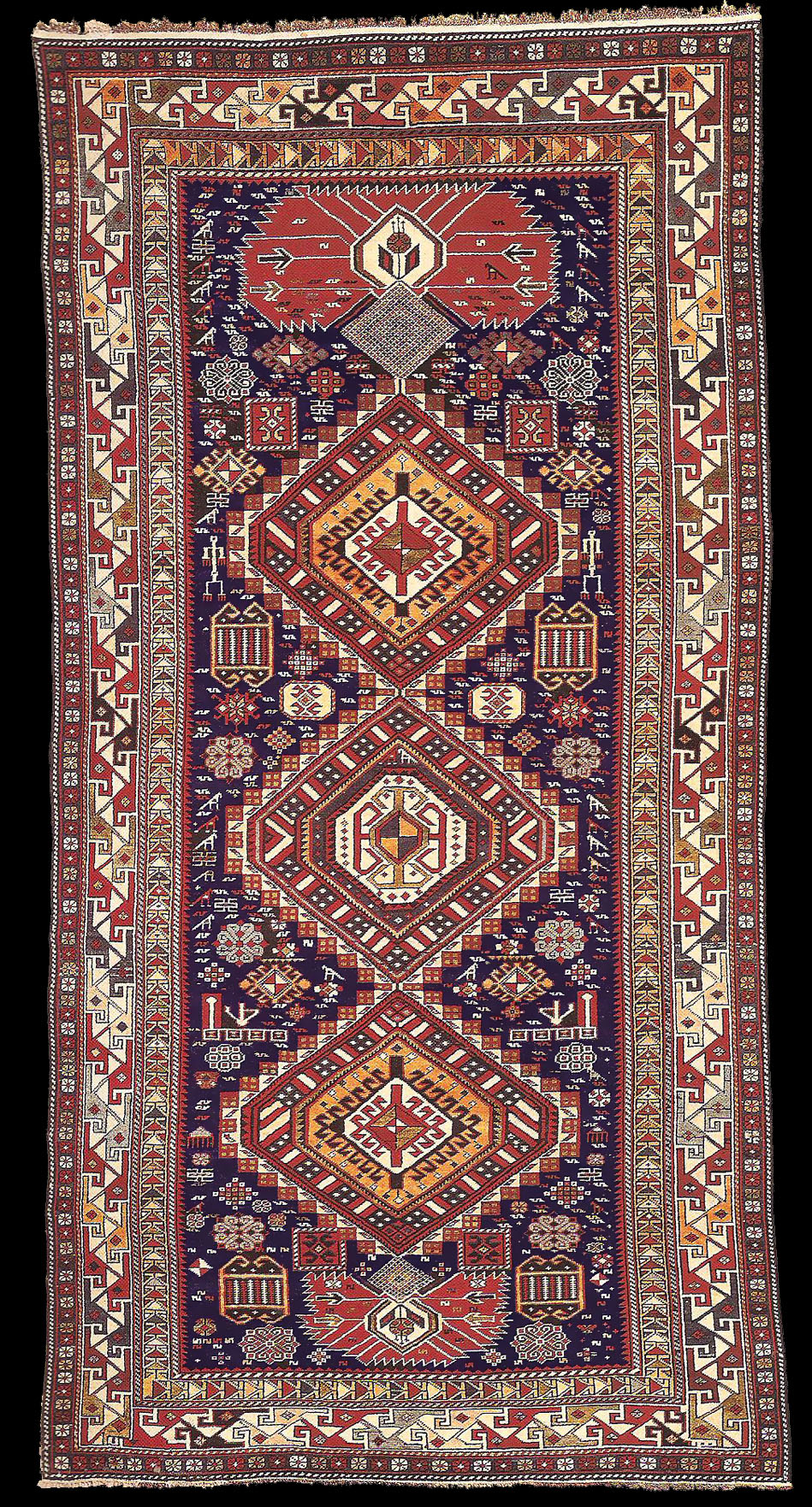|
Antique Shirvan
rug, Northern Shirvan Region,
possibly Arjiman / Archiman village, late 19th century, Azerbaijan
Plate no: 79 Arjiman
Shemakha district, Shirvan
258 X 132 cm
End of the 19th century
This rug has only three medallions (uch göls) in contrast to the previous
one, which had five (also called besh göllü). In
this case, the faruhar is a particularly striking and
expressive symbol of fire. Innumerable variations of small ornaments like
hook-rimmed lozenges, squares, rectangles and octagons, pitchers (symbol of
purity), human figures, birds etc., leave hardly any free space. According
to L. Kerimov, the main border on a light ground is typical of the Shirvan
region and is called hörük (braid). It Is flanked by two minor borders, one
with a row of rosettes and the other with a row of adjacent triangles.
Warps: Wool, Z 3 S, beige and brown, 2 X dark brown + 1 X ivory or 2 X ivory
+1 X dark brown.
Wefts: Cotton, Z2, white, 2 wefts: 1st tight, 2nd waved
Pile: Wool, Z2,
Pile height: 4.5 mm
Knots: Symmetrical 2,/, 45 degree, Hor. 42, Vert.
40 = c. 1,680 Kn/dm2.
Handle: Velours, thin, lightly ribbed.
Upper End: c. 1.5 cm
light cotton simple tapestry weave, warps directly
knotted in groups.
Lower End: c. 0.5 cm remainder of a
cotton simple tapestry weave.
Selvedge: Thin, round, white
cotton shirazi around 2 warp-threads,
threads extending into the fabric.
Colours: 11; dark
red, dark brownish-red, dark
violet-brown (oxidised), dark yellow,
beige, blackish-brown (oxidised), midnight-blue, dark
blue, light blue, light
green, ivory.
Condition: Except for the oxidation, good.
Remarks: The quality of the wool is good and the ornamentation balanced, the
yellow colour leaves something to be desired.
Literature: L Kerimov III, ill. 19, p. 32; James
D. Burns pictures one of the most beautiful carpets of this family in
"The Caucasus Traditions
in Weaving", Seattle 1987, plate 23.
Siyawouch Azadi "Azerbaijani Caucasian rugs"
 |

